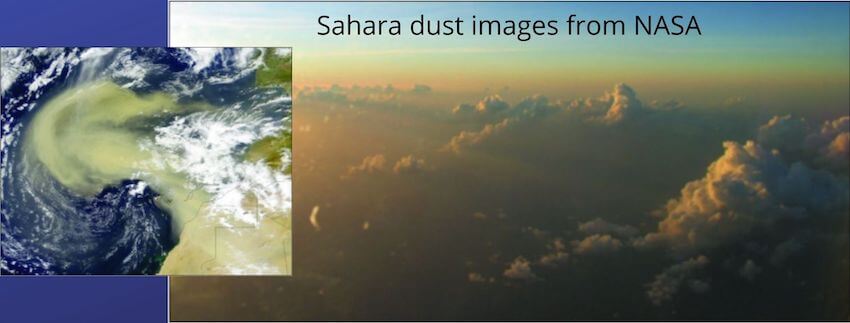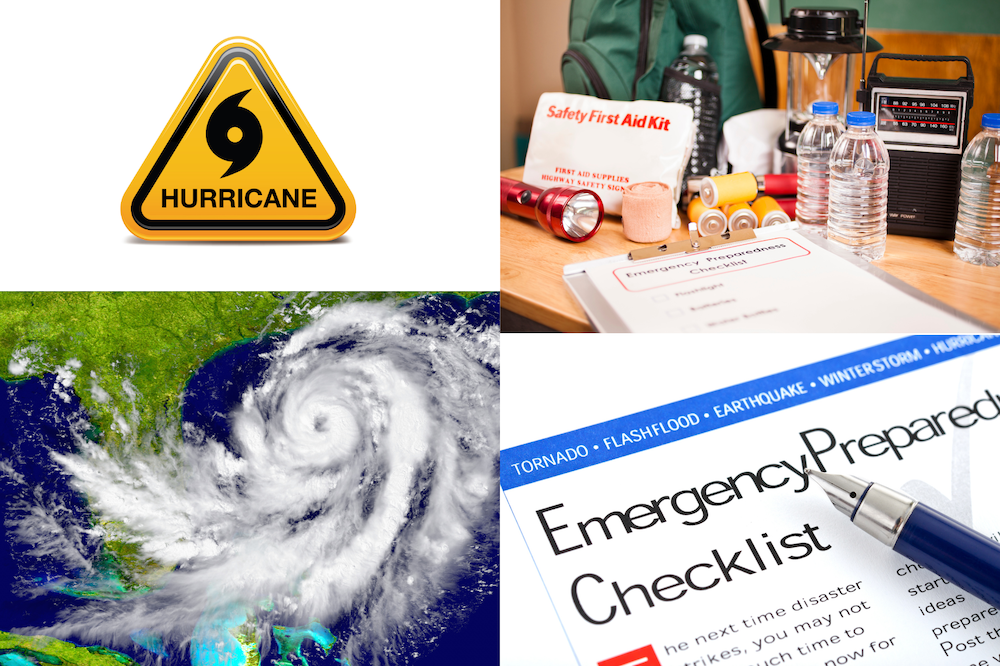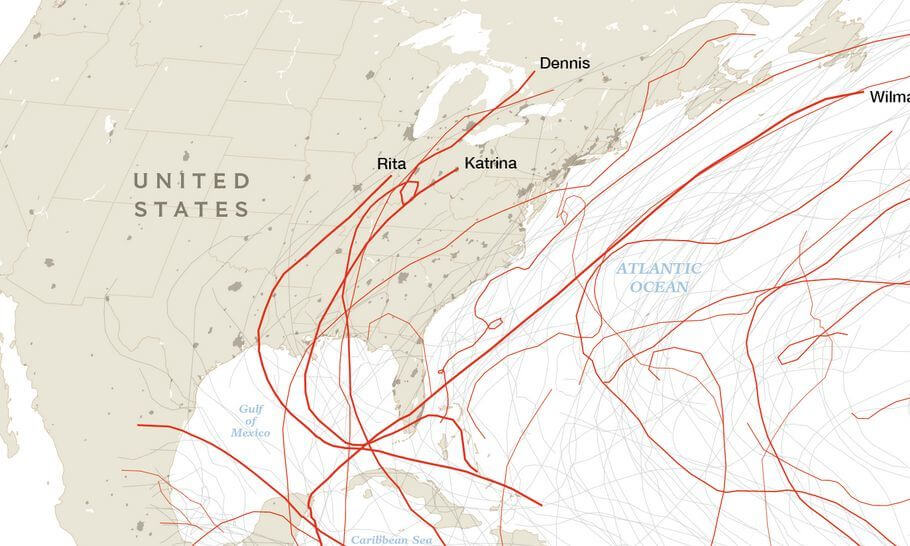10-Year Hurricane Track (2005-2015) Source: National Geographic
Captain Judy’s Corner: Hurricanes – What’s in a name?
Did you know that “Huracan” was the god of big winds and evil spirits worshiped by the Maya people of Central America?
Hurricane preparedness is serious business. While people have been naming major storms for hundreds of years, meteorologist first named hurricanes by the latitude and longitude coordinates where the storm was located. This system of tracking was confusing to people seeking hurricane information.
In the early 1950s, the U.S. National Hurricane Center started the process by naming storms according to a phonetic alphabet, such as: Able, Baker, Charlie. The first hurricane of each season was always named “Able,” the second “Baker,” and so on. (This was also part of the early alpha codes, but that’s another story.)
Repeating names each season became confusing. Meteorologist then decided to follow the tradition of the Naval meteorologists and the long history of naming ships after females. Both female and male names were included in 1978.
How does a storm become a hurricane?
Hurricanes are one of nature’s most powerful and destructive weather phenomena. These powerful storms form over the warm tropic ocean water. When warm moist air over the water rises, it is replaced by cooler air. The cooler air will then warm and start to rise. This cycle causes huge storm clouds to form. These storm clouds will begin to rotate with the spin of the Earth forming an organized system. If there is enough warm water, the cycle will continue and the storm clouds and wind speeds will grow causing a hurricane to form.
Surprisingly, no recorded hurricane has made landfall in Volusia County, although a number of storms have passed over or near our region.
As a Volusia County resident, the greatest damage I have witnessed from hurricanes was created by wind and heavy rains. People living in a storm surge area, mobile home, manufactured home, or recreational vehicle are recommended or may be required to evacuate. The Florida Division of Emergency Management provides maps for emergency evacuation routes. View the Volusia County map here.
What are the makings of a hurricane?
In 2008, researchers from the National Aeronautics and Space Administration (NASA) and National Oceanic and Atmospheric Administration (NOAA) noticed unusual activity above 5,000 feet. It was a typical hot, humid Florida day up to 5,000 feet, and then suddenly it was extremely dry.
Analyzing this unusual activity through photos provided evidence that a layer of dry, dusty air from northern Africa had journeyed more than 4,000 miles across the Atlantic to the United States. It was then researchers realized that dust storms from as far as the Saharan Desert traveled great distances. Potentially, these storms could affect weather in the United States. This dust affects many areas. For instance, it even helps fertilize the Amazon rainforest.

More than half of tropical storms and hurricanes come from Africa. The strength and intensity of these storms are determined by the Atlantic Ocean water temperature combined with an unstable air mass and high-water vapor content. Hurricanes do not like dry air.
Every three to five days during the summertime, these storms develop and move off the African coast. The dust can cover an area as large as the size of the continental United States. The dust can create wind shear, which is a significant change in wind direction and speed. Wind shear can break a tropical storm or hurricane apart.
What about storm safety and comfort?
Over the years, I’ve learned to monitor the weather carefully and always prepare for hurricanes by knowing what actions to take before the hurricane season. When the hurricane approaches, and after a hurricane leaves my area, I take certain steps. Here are a few comfort tips that make my hurricane experiences more pleasant:
- Monitor the National Hurricane Center web site; watch The Weather Channel television station
- Stock plenty of bottled water
- Stock food not that doesn’t need refrigeration
- If stocking canned foods, have a non-electric can opener
- Keep prescription drugs and other medications handy
- Have blankets handy
- Plan a way to check-in on neighbors, friends, and family
- Place a bucket of water near toilet for flushing
- Gather several flashlights and extra batteries
- Completely charge phone and other electronic devices
- Top off gas tanks
- Barometer for education and entertainment watching the pressure drop as hurricane nears (airplane altimeter works, also!)
Safety Tips

Below you’ll see examples of safety tips, but be sure and check out the complete list here.
- Buy supplies before hurricane season rather than waiting for the pre-storm rush.
- Stay informed. Check the websites of your local government agencies for evacuation routes and shelters; monitor the National Hurricane Center web site. Listen to NOAA Weather Radio; watch The Weather Channel television station.
- Know locations of storm shelters and evacuate your area if instructed by local officials to do so.
- Home Safety Tips:
- During the storm, stay in a small interior room, closet, or hallway on the lowest level; put as many walls between you and the outside as you can.
- Stay away from windows, skylights, and glass doors.
- If the eye of the storm passes over your area, there will be a short period of calm, but at the other side of the eye, the wind speed rapidly increases to hurricane force. Do not go out in the eye of the storm!
Being prepared and informed is the key for a safe hurricane season. Quoting one of America’s founding fathers, Benjamin Franklin, “By failing to prepare, you are preparing to fail.”

Read more articles by Captain Judy Rice!

